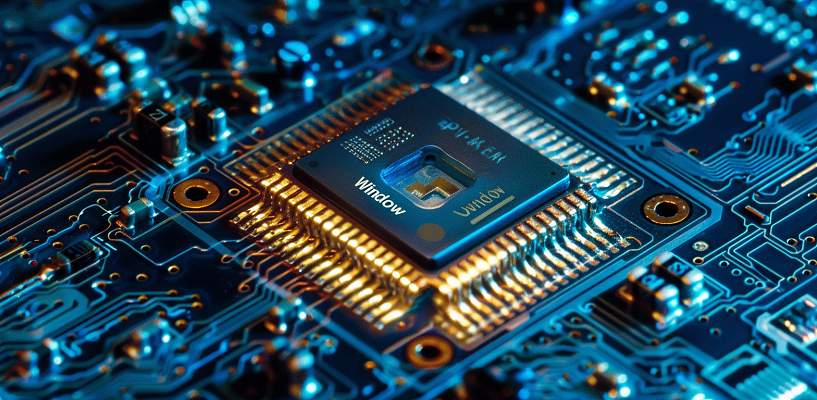- Home
- >>
- US
- >>
- Technology
- >>
- Electronics
- >>
- ROM
ROM

Computer memory that contains instructions, in permanent form, for the device to “boot up” is called read-only memory, or ROM. Non-volatile memory chips, or ROM chips, come pre-programmed from the manufacturer with “instructions and data.” ROM is an integrated circuit programmed when it is manufactured.
Firmware is often stored in ROM. Software known as firmware is in charge of a device’s fundamental operations, including “input and output management, diagnostics, and booting up.” The process of “booting up” involves loading the operating system, initializing hardware components, and transfer of controls to the operating system.
ROMs don’t need to be refreshed because they are static. Its contents may always be confirmed and are always known.
When n is the number of “address inputs” and m is the number of data bits, a ROM is said to be “2n x m” bit ROM if it can store 2n words, each of m bits. For instance, a 16 × 8 ROM, which is equivalent to 24 × 8, consists of 16 words, each of 8 bits. Since 16 = 24, there are only 4 input lines, and we can provide 16 “addresses” using 4 binary variables.
Also in most cases, the “memory cells” that make up the Memory Core are arranged in an array with 2n rows for word lines and 2m columns for bit lines. Each memory cell has the capacity to “store” a single binary bit of data. Thus, there are 2n × 2m memory cells in total in this array. The responsible “word line” and “bit line” must be chosen in accordance with the address in order to access a specific data bit from the array.
Read-only memory can now be “field or factory” configured.
ROM Types -
Read-only memory comes in several forms, including “mask ROM, EPROM, EEPROM, and PROM.”
MROM (Mask ROM) -
When the term ROM is used simply, it only refers to “mask ROM,” the earliest kind of solid-state ROM. Mask ROM is created with the “desired data” permanently placed in it, meaning it can never be changed.
These were created by a process that uses a mask to directly write binary data onto a “silicon plate.” This process is no longer in use.
PROM (Programmable Read-only Memory) -
“Texas Instruments” constructed PROM memories towards the end of the 1970s. An unprogrammed PROM contains only 1’s as its data.
Thousands of fuses, or diodes, make up these memory chips, which can be “burnt” with the aid of a “PROM programmer.” Usually, this programmer creates or destroys “internal linkages” (fuses or anti-fuses) within the chip using a high voltage (12V). As a result, the burned fuses represent 0 and the remaining ones, 1.
One word at a time, the programmer enters data into the PROM. It is possible to program a PROM only once. Low-level applications like “firmware and microcode” require PROM.
EPROM (Erasable and Programmable Read-only Memory) -
Strong UV light exposure (usually for ten minutes or more) can be used to erase “EPROM,” and then it can be overwritten using a procedure that calls for applying a higher voltage than usual. A “specific wavelength” of ultraviolet light causes the fuses on the chip to reconstruct, which resets all of the memory bits to 1.
The quartz “glass panel” on these chips allows ultraviolet light to pass through. To avoid “inadvertent” erasure, the glass is usually labeled after programming.
An EPROM ultimately wears down from repeated exposure to UV light, however most EPROM chips can “withstand” more than 1000 cycles of erasing and reprogramming.
The data is stored by the EPROM similar to the charge is stored by a “capacitor.” Data in the form of an “electrical charge” gets trapped in an insulated/floating gate area during programming. Due to the lack of a leaking path, the “charge” is kept for longer than 10 years.
The cost of EPROM exceeds that of PROM. Specifically, microcontrollers employ EPROM.
EEPROM or E2PROM (Electrically Erasable and Programmable Read-only Memory) -
Unlike EPROM, EEPROM memories may be wiped off with just an “electric current” even while they are installed in a computer. Any region in an EEPROM can be selectively programmed or wiped. Different voltages are needed for “erasing, writing, and reading” data from an EEPROM.
Compared to “writing or flashing” to a RAM, which takes nanoseconds, writing/flashing to an EEPROM requires milliseconds per bit.
Compared to traditional EEPROM, “Flash EEPROM” may be erased and overwritten more quickly, and newer models have extremely high endurance (exceeding 1,000,000 cycles). Flash devices are also different in that they can only erase one “sector” at a time rather than byte-by-byte. Sector sizes usually vary from 256 bytes to 16KB.
Flash and traditional EEPROM are comparable in that they can both read a single cell’s content.
ROM Applications -
Examples of ROM applications include:
- BIOS (basic input/output system) and boot loaders for PCs.
- Function lookup tables (i.e., are tables that represent the binary values of functions such as “exponential, trigonometric, and others”).
- Character generators (i.e., are devices that translate ASCII codes into CRT display-readable “alphanumeric” characters).
- Particular software instructions (firmware) that would be kept indefinitely and never altered.
- “Central processing unit” (EPROM) of a digital function
- The “memory circuit” (E2PROM), that maintains a record of local station channel numbers, in an electronically tuned automobile radio.
RAM vs ROM -
| RAM | ROM |
|---|---|
| Temporary Storage | Permanent Storage |
| Volatile | Non-volatile |
| Store data in GBs | Store data in MBs |
| Writing data is faster | Writing data is slower |
| Used in normal operations | Used in startup process of computer |
| Costlier | Cheaper |
| Type of main memory, or “primary storage” | Type of main memory, or “primary storage” |
| “Destructive write” refers to the process of sending data (writing) to a RAM memory address because the new data wipes the previous data | It is useless to send data to a ROM memory “address” because it is a read-only memory |
That’s all friends.
Ads Section

